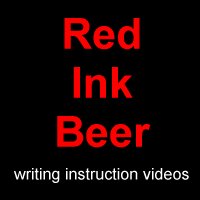Comma or Dash?
Here’s the question: You want to add an emphatic statement to the end of a sentence, something that will catch the readers’ attention. To create reader focus, you want to create a brief pause prior to the emphatic statement. But do you use a comma or a dash?
Bad Example and Explanation
Here’s an example of the wrong way to do it:
It’s reality, and the subject of a jury-prize-winning film in the GE Focus Forward Film Competition. (http://news.yahoo.com/chemist-hopes-artificial-leaf-power-civilization-using-photosynthesis-173654018–abc-news-tech.html)
See that comma? The writer is using the comma to set off the final information and to create impact, i.e., emphasis. That comma is a problem.
One of the most common uses for commas is to signal the end of a complete sentence, a.k.a. independent clause, that the writer is linking to another complete sentence with a conjunction (e.g., and, but). The sample sentence begins with the independent clause “It’s reality” and the conjunction “and.” The comma suggests that the information following “and” will be another complete sentence, which is not true.
In fact, the entire descriptive phrase “the subject of a jury-prize-winning film…” is linked to the verb “is” found in the contraction “it’s.” As evidence of this, the writer could have written “It’s reality, and it’s the subject of a . . . .” Unfortunately, the writer didn’t do this. By using the comma to create an emphatic pause, the writer separated “it” from its description.
Still not convinced that the comma is wrong? Try this: Separate the subject from its first description and see if it looks right. “It’s, reality” is incorrect because it separates the subject “it” from its description, “reality.” The subject and the first description need to be together, not separated by a comma. The subject and second description also need to be together, but the comma separates them.
In brief, the comma needs to go.
Solution: Use a Dash
How, then, could the writer have created the pause needed to create emphasis? Answer: use an em dash, which is the long dash.
Em dashes have several uses, but the primary use is to create a pause before a final statement that is joined by a conjunction and would otherwise seems like part of the grammatical structure of the sentence. The long pause will cause the reader to focus on the final statement.
Examples of commas versus dashes for emphasis:
1. He is a veteran, a hero. (This doesn’t need a dash because “a hero” isn’t joined by a conjunction and because leaving out the comma would make an ungrammatical sentence.)
2. He is a veteran–and a great father. (This uses an em dash to separate and emphasize “a great father,” which the conjunction “and” would otherwise join to the first part of the sentence.)
If the writer of the bad example wanted to create emphasis on “the subject of a jury-prize-winning film . . . ,” the writer should have used an em dash.



